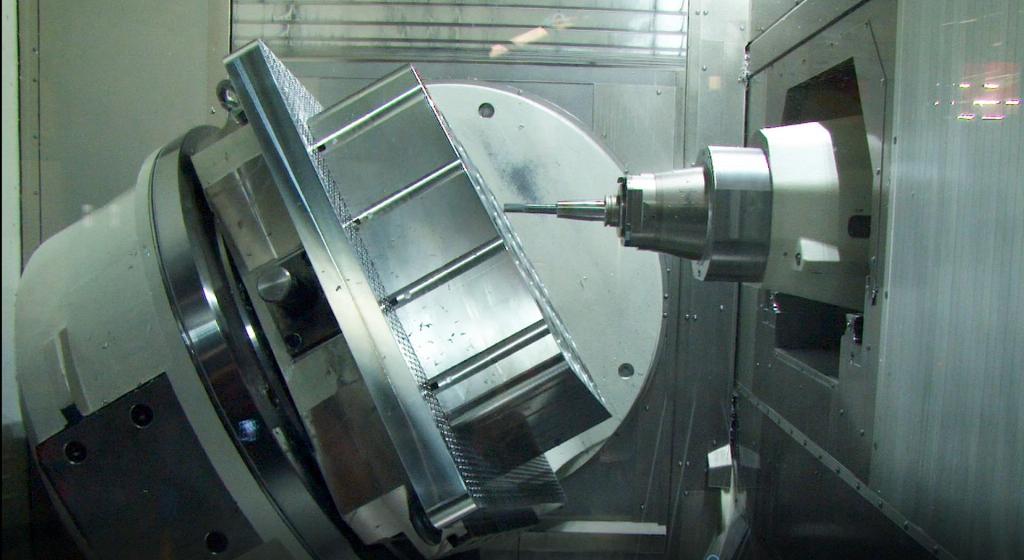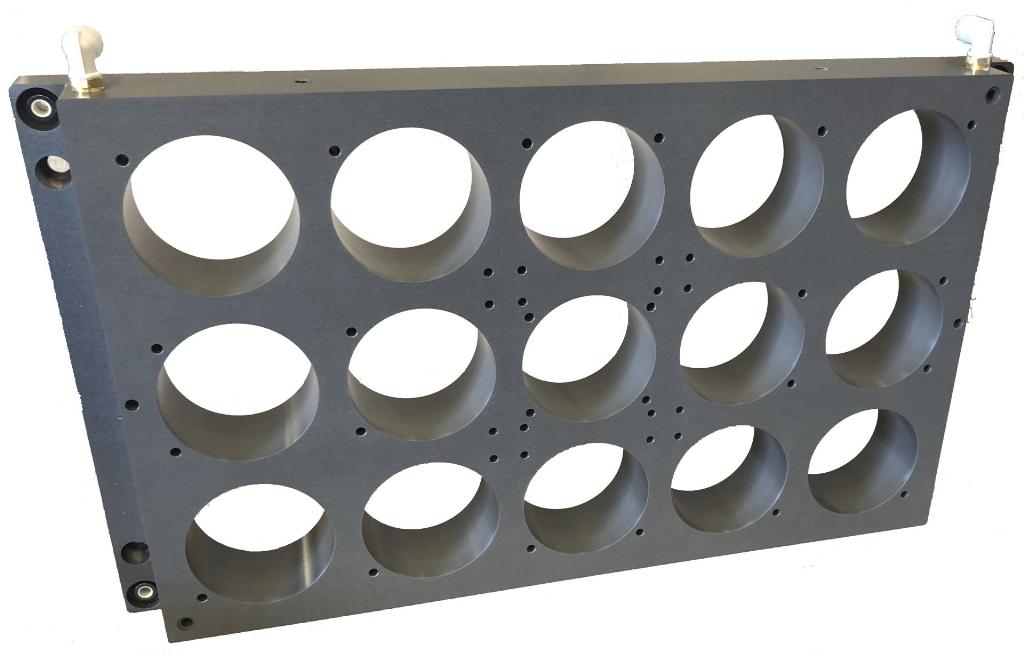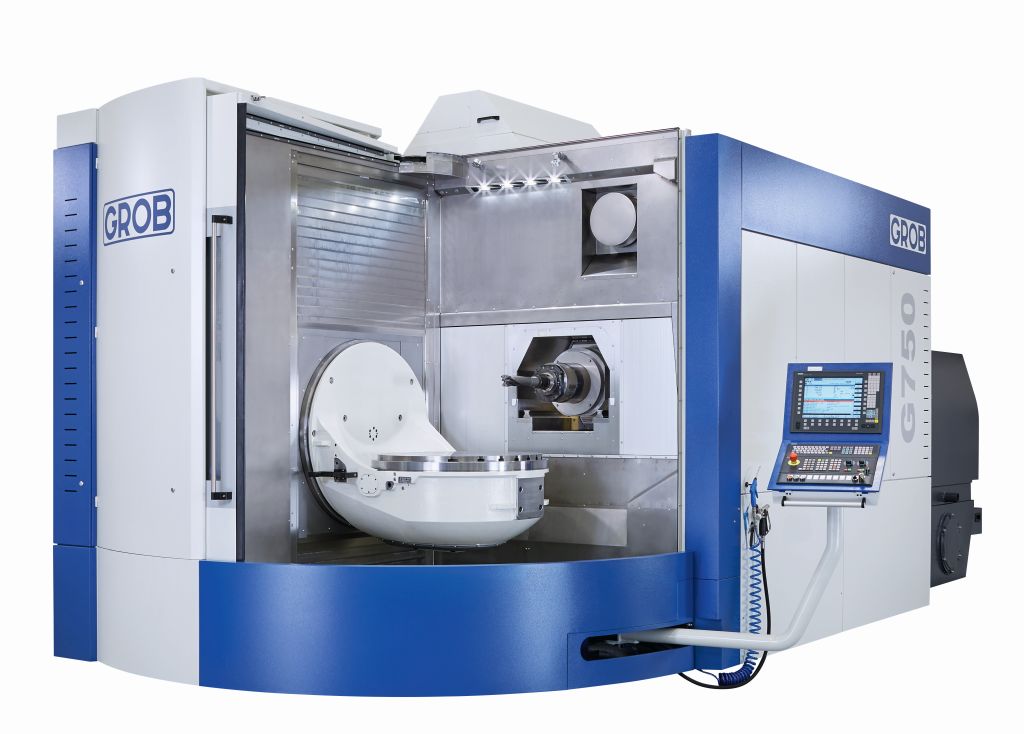A pattern of productivity

Ed Hill visited plastic packaging tooling specialist TMB Patterns to discover how the installation of a Grob G750 universal machining centre has enhanced its machining capabilities, efficiency and profitability.
Ed Hill visited plastic packaging tooling specialist TMB Patterns to discover how the installation of a Grob G750 universal machining centre has enhanced its machining capabilities, efficiency and profitability.
If you walk into any supermarket in the UK and throw products into a basket as diverse as currant buns, strawberries or a slice of rump steak, the chances are you will come into contact with packaging made with tools from TMB Patterns.
The Bridgwater, Somerset-based company can claim to be the largest supplier of thermoforming tooling to the packaging industry in the country. Its tools are used by plastic packaging companies supplying trays and containers used to store, protect, and attract customers perusing produce found on thousands of supermarket shelves and other retail outlets.
Established in 1977 by current managing director Martin Baker and former colleague Terry Morley, the company, which employs around 70 staff, uses the latest metalworking, CAD/CAM and automation technology to produce precision moulds and patterns used to thermoform millions of plastic packaging products every year. As well as supplying the UK around 20% of the moulds TMB manufactures are also sent for export to companies in Europe, the US and beyond.
The company has a wide range of CNC and other metalworking machines in its plant list including mill/turn lathes, a large surface grinding machine, blade forming machines, a Mollart gundrill, a DMG Mori UMC and a 5-axis EDM machine. Mr Baker has also designed and invested in an Erowa robotic manufacturing cell linked to two Hermle 5-axis machining centres, two DMG Mori 5-axis DMU milling machines and a TEK4 EDM hole sparking machine which operates 24/7.

TMB offers manufacturing support right from the design of components through to trials and finally the implementation of full production.
Although the shopfloor handles a range of materials, the majority of the moulds and associated parts are machined from solid aluminium billets. These square workpieces can range from 500mm to 1m in size and before machining can weigh up to 100kg or more.
The moulds themselves are also mounted on large aluminium plates so they can be placed on the thermoforming machines. The plates require large amounts of metal removal; it’s not unusual that around 90% of the aluminium is removed during machining leading to substantial amounts of swarf which has to be managed.
Beating the bottlenecks
The manufacturing of these large plates was beginning to cause a bottleneck in production at TMB. Handling the large billets between each machining operation was awkward and frequent stoppages were required to deal with swarf build up.
“I used to machine the plates on a conventional vertical CNC machine,” Mr Baker explains. “It has a large table and slideways. The problem was that swarf would build up and get compacted in the slideways which would then cause problems and stoppages. Ideally, I wanted to machine horizontally.”
Mr Baker searched the market to find a CNC machine that could offer him a solution. When he saw a Grob universal machining centre in action he realised it could offer an alternative.
The Grob G series machine’s X- and Z-axes are located on the cutting tool side while the Y-axis and A/B-axes overhang the workpiece.

Mr Baker continues: “The Grob 5-axis system has a table that can actually turn upside down which means I can easily machine horizontally. The swarf simply drops down from the workpiece on to a conveyor, out of the machine and then into a compactor.”
Mr Baker needed a machine that could handle large workpieces so he opted for the Grob G750 with axis travels of 1,000mm in X, 1,100 in Y and 1,170 in Z, which can deal with the largest tool plates that TMB manufactures.
The new machine, which was installed at the Somerset factory in November 2017, has greatly reduced cycle times due to its substantially improved machining capability and multi-axis flexibility.
“It’s not just the machining time that has reduced considerably but also the number of operations that also saves time,” Mr Baker explains. “With the process before we would rough machine the workpiece, turn it over and then rough machine again. Then it would be taken to a gundrilling machine to add the holes that the cooling water flows through; then it would come back onto the first machine for finish machining on each side. Then the part would go onto a surface grinder for the final finish.
“With the Grob machine we can bring that down to just two operations. I can rough machine and finish machine in one set-up and then gundrill. The surface finish is so good we have dispensed with the grinding operation completely. With the cutting tools we use the metal removal is amazing. I never thought these speeds and feeds could be possible. It has halved machining time and more.”
At the moment the large workpieces are placed on the machine using a crane but in future Mr Baker is looking at robotic loading options which could also be used to service another Grob machine.
An important factor for Mr Baker was the service and support TMB Patterns would receive from Grob UK. Installation of the large machine at the factory, including the hire of a large 100-ton crane, was organised by Grob, along with operator training, full UK service support additionally linked to the machine builder’s factory in Germany giving 24 hours per day, 360 days per year assistance.
He says: “What I liked about the Grob machine, having visited the factory in Germany, is the fact that they focus mainly on building one type of machine, just in different sizes. I know this means they can swiftly and easily service our machines. The support and response time from Grob has been excellent.”
Seeking new sectors
The capability of the new machine is also hastening TMB’s ambitions to widen the industry sectors it serves. The ISO 9001 certified company is exploring markets such as aerospace, nuclear and composite component manufacturing where its skill set and machining capabilities can readily cross over.

“We work to exacting standards day-to-day and we know what other opportunities exist for large 5-axis machining in other demanding sectors,” Mr Baker affirms. “Our new production manager was formerly employed in aerospace and we have a great skills base at the company with many members of staff having more than 25 years’ service. Additionally, we take on two apprentices each year who get a very wide range of training at the company.”
The acquisition of the Grob G750 is just one element of this forward-thinking company’s approach that has served it so well over the years. As well as new tech and hardware, manufacturing software has had a major impact on TMB’s lead-times and productivity according to Mr Baker. The company uses SolidWorks, Rhino 3D and Edgecam to design and manufacture the moulds and other parts it produces and for uniformity, Heidenhain CNCs are used on all the company’s machine tools.
“Software has made an enormous difference, especially in our industry where we generally produce small batches from 1- to 15- offs,” Mr Baker says. “We can design moulds and carry out water flow analysis to prove they will perform before we start cutting metal. In the past, because of the amount of time needed for programming and trials it was difficult to make these kinds of runs cost effective.”
This flexibility is crucial in an industry where package designs can be short-lived and there is a constant drive, both commercially and environmentally, to reduce the amount of weight and plastics used in packaging.
“There is always a demand to take weight out of packaging, but we still have to maintain the strength in the design so the end product can fulfil its function, be de-nested and go through high-speed packing lines without twisting or buckling. Now we can prove things through using the software. It has added a much more scientific approach to the thermoforming industry.”
Mr Baker asserts the arrival of the Grob machine is reducing manufacturing cost not only for TMB Patterns but also for its his customers in a highly competitive global market.
“Our strategy at TMB is constant improvement. With the introduction of the Grob G750 we are at the forefront of machining technology. It has reduced machining times of large components and therefore not only reduced delivery times for our customers, but also has brought our pressurised profit margin back to a sustainable level.”
Grob UK www.grobgroup.com/en/home.html
TMB Patterns http://tmb-patterns.co.uk/














